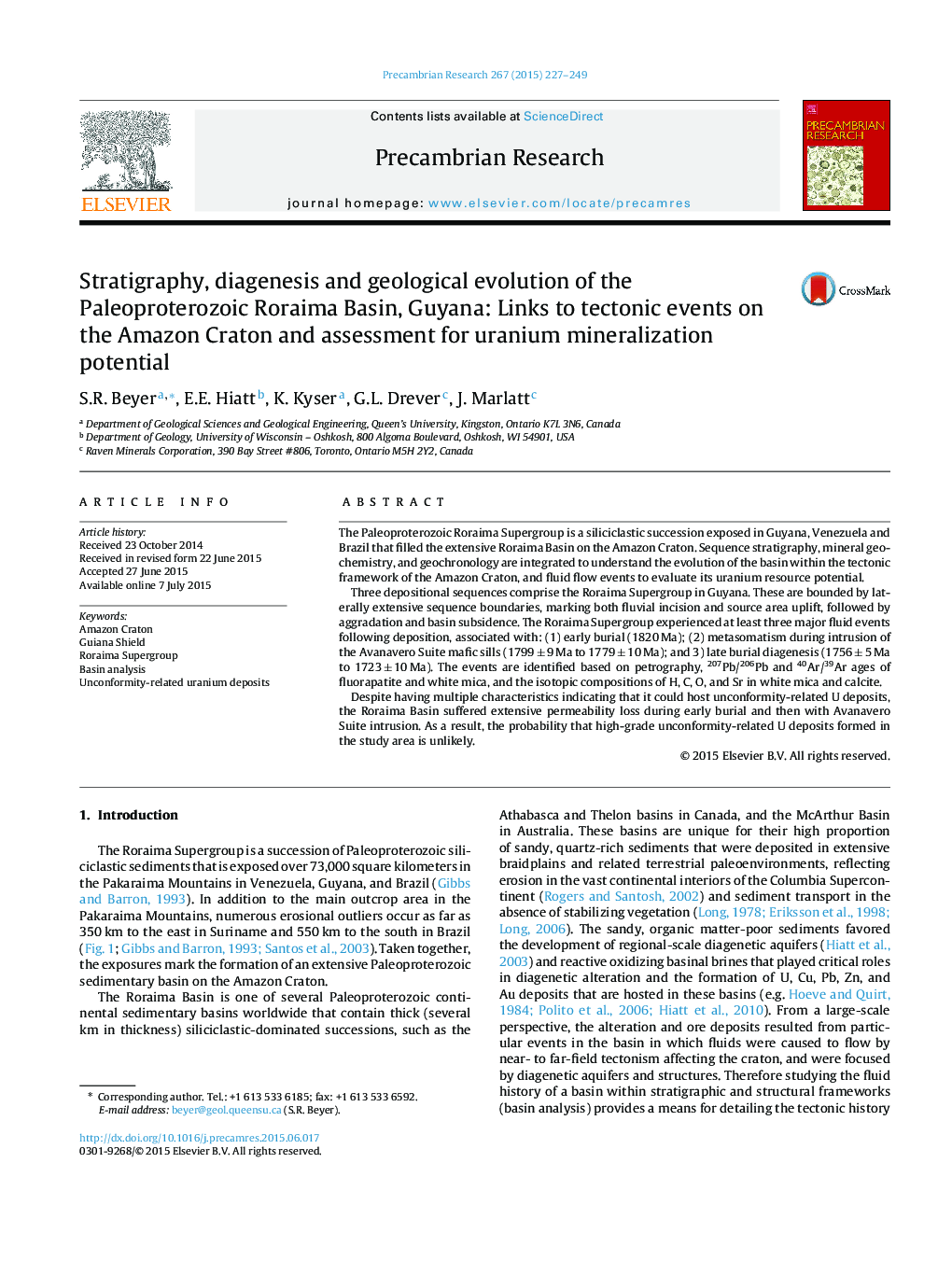| کد مقاله | کد نشریه | سال انتشار | مقاله انگلیسی | نسخه تمام متن |
|---|---|---|---|---|
| 4722617 | 1639608 | 2015 | 23 صفحه PDF | دانلود رایگان |

• The stratigraphy of the Roraima Basin reflects dynamic Amazon Craton tectonism.
• Early burial occurred ca. 1820 Ma based on dating of fluorapatite and white mica.
• Avanavero sills intruded ca. 1785 Ma and effectively closed basin fluid flow paths.
• Limited late burial alteration occurred ca. 1750 Ma based on dating of white mica.
• The abbreviated basin fluid history does not support high-grade U deposit formation.
The Paleoproterozoic Roraima Supergroup is a siliciclastic succession exposed in Guyana, Venezuela and Brazil that filled the extensive Roraima Basin on the Amazon Craton. Sequence stratigraphy, mineral geochemistry, and geochronology are integrated to understand the evolution of the basin within the tectonic framework of the Amazon Craton, and fluid flow events to evaluate its uranium resource potential.Three depositional sequences comprise the Roraima Supergroup in Guyana. These are bounded by laterally extensive sequence boundaries, marking both fluvial incision and source area uplift, followed by aggradation and basin subsidence. The Roraima Supergroup experienced at least three major fluid events following deposition, associated with: (1) early burial (1820 Ma); (2) metasomatism during intrusion of the Avanavero Suite mafic sills (1799 ± 9 Ma to 1779 ± 10 Ma); and 3) late burial diagenesis (1756 ± 5 Ma to 1723 ± 10 Ma). The events are identified based on petrography, 207Pb/206Pb and 40Ar/39Ar ages of fluorapatite and white mica, and the isotopic compositions of H, C, O, and Sr in white mica and calcite.Despite having multiple characteristics indicating that it could host unconformity-related U deposits, the Roraima Basin suffered extensive permeability loss during early burial and then with Avanavero Suite intrusion. As a result, the probability that high-grade unconformity-related U deposits formed in the study area is unlikely.
Journal: Precambrian Research - Volume 267, September 2015, Pages 227–249